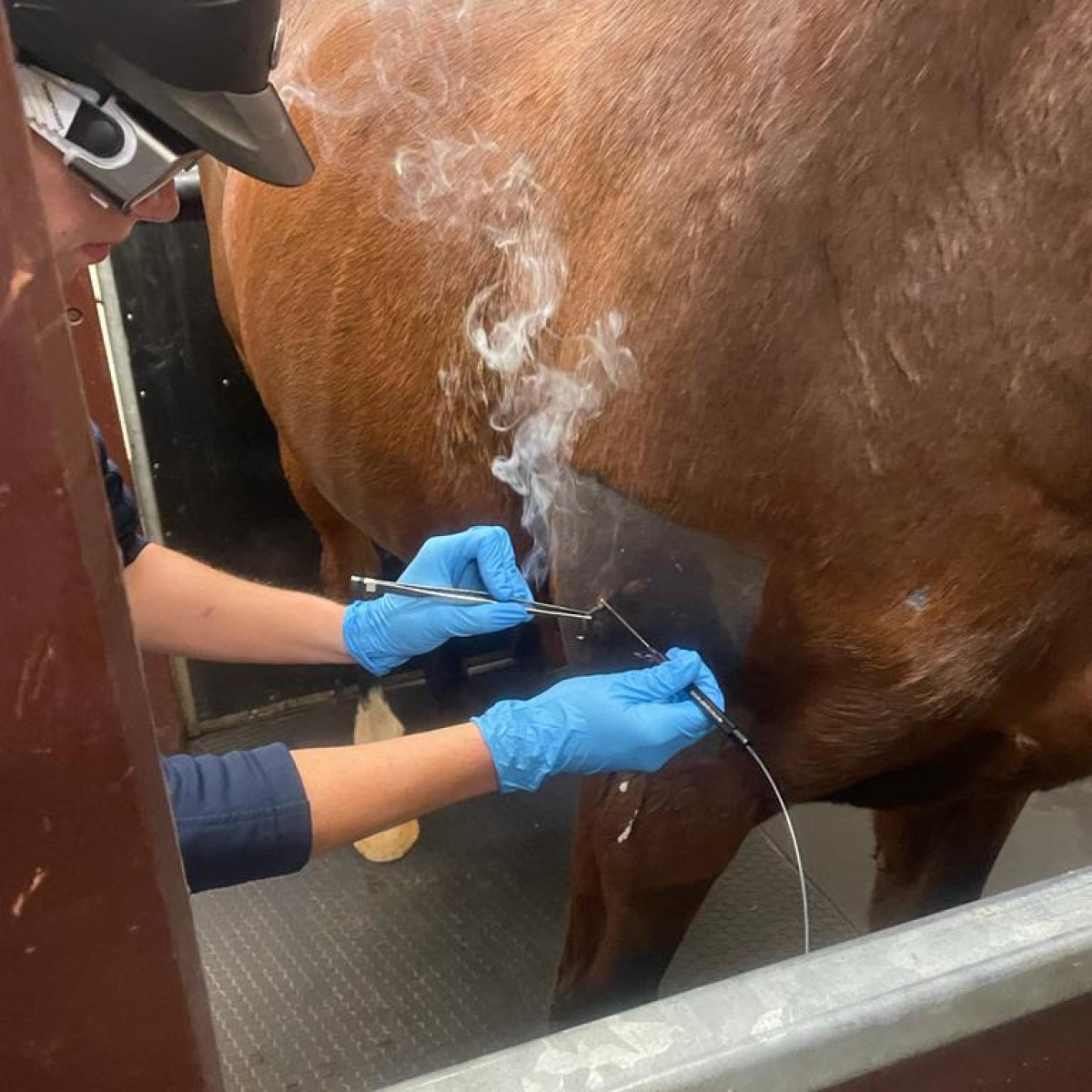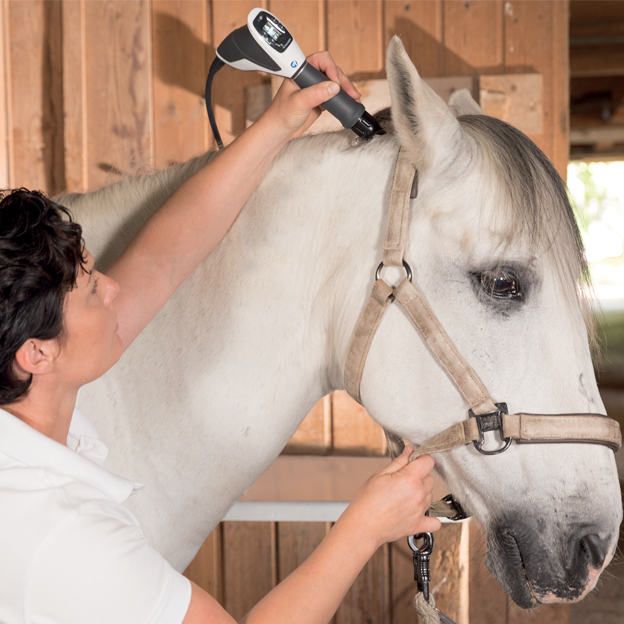Why Equine Therapy is Becoming a Preferred Choice for Emotional Health
Wiki Article
Assessing the Effectiveness of Laser Therapy in Equine Therapy for Injury Rehabilitation
The evaluation of laser treatment's effectiveness in equine injury rehabilitation depends upon multiple aspects, consisting of recovery time, discomfort reduction, and cells regrowth. Professional research studies suggest notable enhancements in problems like tendonitis and osteoarthritis, associated to improved mobile feature and elevated ATP production. Vets often observe superior outcomes with laser therapy contrasted to conventional methods, positioning it as a vital aspect in equine care. The need for continuous monitoring and customized therapy plans can not be overemphasized. What certain medical evidence sustains these cases, and just how do vets carry out these procedures in practice?Understanding Laser Treatment
Laser therapy has actually become an essential device in veterinary medication, particularly in the treatment of equine conditions. Known for its non-invasive nature and efficacy, laser treatment involves the application of particular wavelengths of light to boost cells repair and minimize swelling. This healing technique is progressively preferred for its capacity to accelerate the healing process in steeds suffering from a selection of musculoskeletal injuries and persistent conditions.The key device behind laser therapy is its capacity to improve cellular features. When laser light passes through the skin, it is taken in by mitochondria, the powerhouse of cells, which leads to increased manufacturing of adenosine triphosphate (ATP) This biochemical power increase helps with cellular fixing and regeneration. Furthermore, laser treatment promotes vasodilation, enhancing blood flow and oxygen delivery to broken cells, thus expediting recovery.
In equine medicine, laser therapy is especially helpful for problems such as tendonitis, osteoarthritis, and wound recovery. The technique is lauded for its pain-relieving homes, allowing steeds to regain flexibility and feature much more rapidly. Vets likewise value its minimal negative effects compared to various other treatment modalities, making it a dependable and safe choice for equine treatment.

Exactly How Laser Treatment Functions

Upon absorption, these photons set off a collection of biochemical modifications, improving mitochondrial feature and causing increased adenosine triphosphate (ATP) production. This rise in ATP accelerates cellular metabolic rate, promoting cells repair service and regrowth. Furthermore, laser therapy modulates inflammatory feedbacks by influencing cytokine degrees and lowering oxidative stress, thereby alleviating pain and swelling.
An additional considerable aspect of laser treatment is its function in boosting microcirculation. The therapy promotes vasodilation, improving blood circulation and oxygen delivery to damaged cells (Equine Therapy). This helps with the removal of cellular particles and sustains the spreading of fibroblasts and collagen synthesis, critical for wound healing
Clinical Proof
The effectiveness of laser therapy in equine therapy has been validated via different medical researches, showcasing here are the findings its healing potential throughout an array of problems. Numerous regulated tests and empirical research studies have documented significant improvements in tissue fixing, pain decrease, and total rehab timelines. As an example, a research performed by Turner et al. (2012) demonstrated that equines treated with low-level laser treatment (LLLT) for tendon injuries showed sped up healing compared to those receiving traditional treatments. The study highlighted a significant reduction in swelling and boosted collagen development.Likewise, research by Johnson and colleagues (2015) focused on equine muscular tissue injuries, revealing that laser therapy significantly quickened muscle mass fiber regeneration and decreased muscle stiffness. These searchings for were substantiated by histological evaluations showing better muscle mass tissue organization. Clinical assessments have shown that laser treatment can ease chronic conditions such as osteo arthritis. A research study by Smith et al. (2018) reported that horses with osteoarthritic joints experienced remarkable pain relief and boosted series of movement following a routine of laser therapy sessions.
Vet Insights

Veterinarians likewise value the adaptability of laser therapy. It can be used for a wide array of conditions, from shallow injuries to deeper musculoskeletal injuries. Dr. Emily Brown highlights its energy in treating conditions like tendonitis and osteoarthritis, where standard therapies often fail. She explains that laser treatment can be customized to the certain demands of each equine, ensuring optimum outcomes.
Furthermore, veterinarians value the ability to integrate laser therapy with various other therapy modalities. This multimodal technique can enhance overall therapy efficacy, offering a thorough service for equine rehab. Such recommendations from seasoned specialists highlight the expanding approval and more helpful hints application of laser treatment in equine medication.
Practical Considerations
A vital aspect of executing laser therapy in equine therapy involves recognizing the functional considerations that ensure its efficiency and safety and security. Most importantly, it is crucial to choose the appropriate laser tool, as different kinds vary in wavelength, power, and infiltration depth. Equine Therapy. Vets should be well-versed in these criteria to tailor treatment protocols properly per injury typeIn addition, the regularity and period of laser therapy sessions need careful planning to make the most of restorative advantages while decreasing any kind of possible unfavorable impacts. Constant tracking of the equine's action to therapy can guide needed adjustments in the treatment regimen. Developing a secure and controlled setting throughout therapies is also vital to prevent unintentional direct exposure to laser emissions, which can hurt both the equine and the trainer.
Training and qualification of workers administering laser treatment are paramount to make certain proper technique and to promote security standards. Additionally, preserving exact documents of each session, consisting of laser settings and observed results, is vital for assessing the total performance of the therapy and for making data-driven choices.
Final Thought
Laser treatment has become an efficient technique in equine injury recovery, offering considerable benefits in healing time, read this post here discomfort alleviation, and cells recovery. Medical research studies underscore considerable improvements in conditions such as tendonitis and osteo arthritis, credited to improved mobile feature and raised ATP manufacturing. Vet observations corroborate these findings, highlighting exceptional outcomes compared to standard therapies. For optimal results, constant monitoring and customized treatment procedures remain crucial in leveraging the full possibility of laser therapy in equine treatment.Report this wiki page